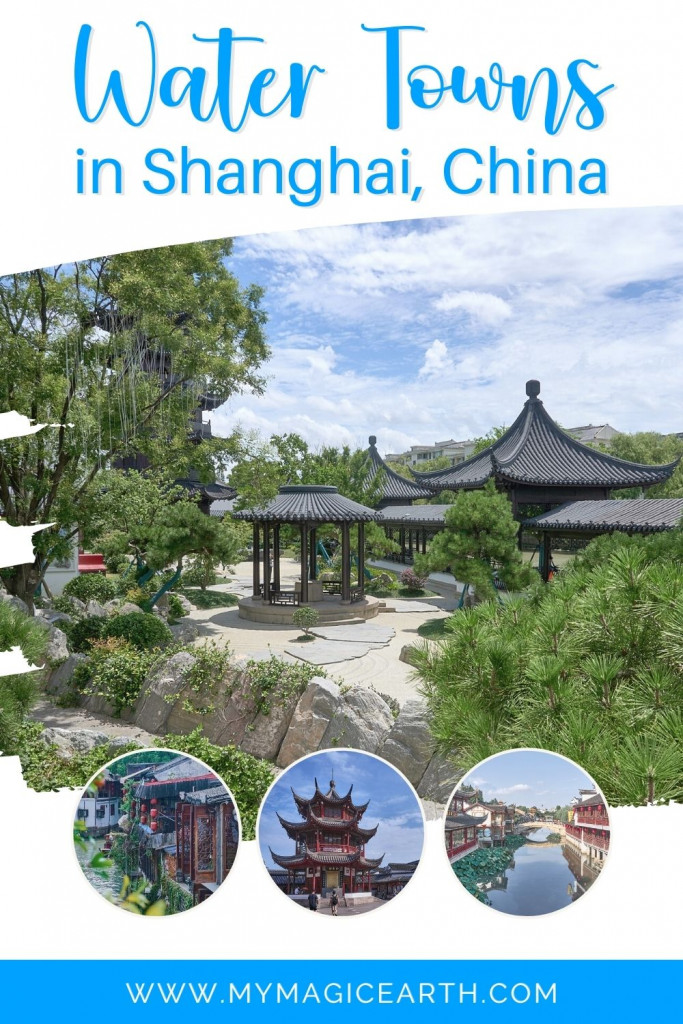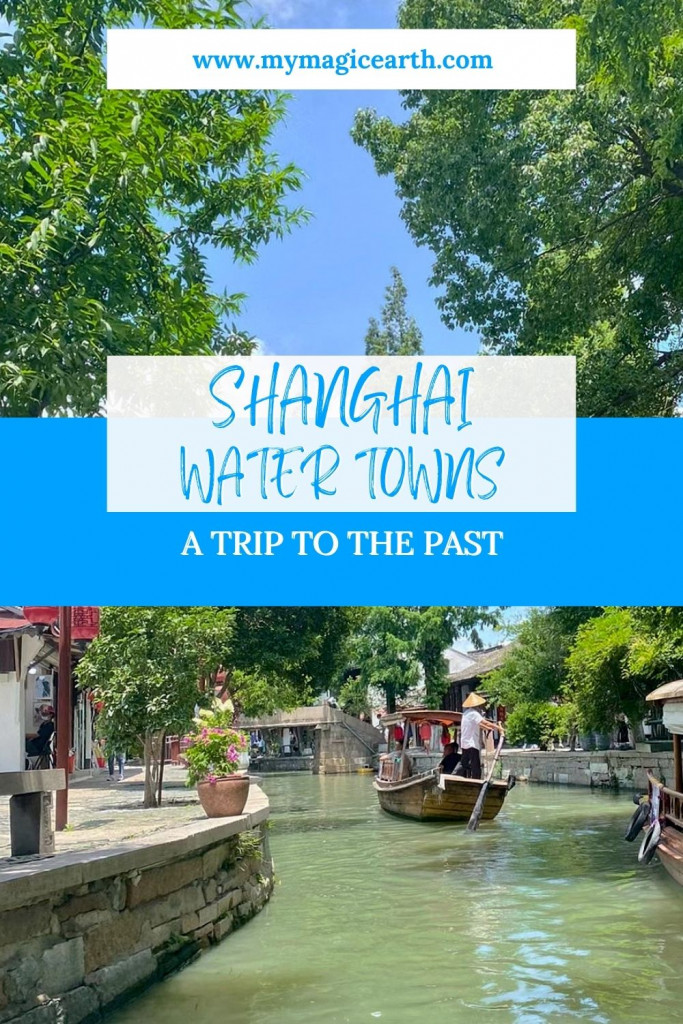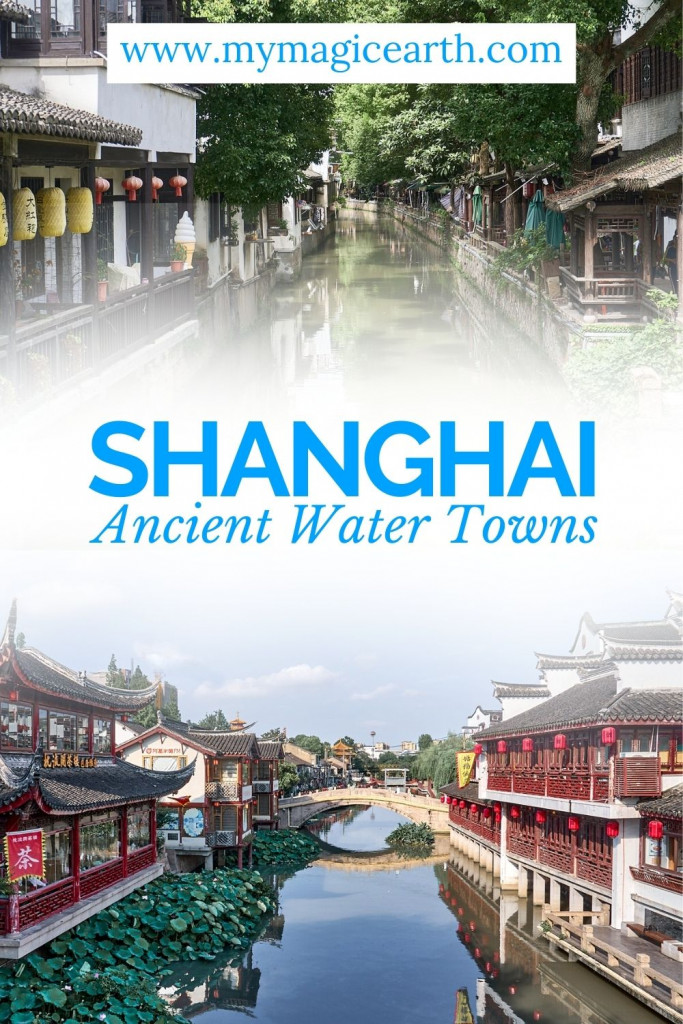Shanghai, known for its modern skyscrapers and bustling city life, holds a delightful secret – Shanghai’s ancient water towns. These charming towns, such as Zhujiajiao Ancient Town and Xinchang Ancient Town, aren’t situated amidst the city’s tall buildings. Instead, they are nestled on the outskirts of Shanghai. These thousand-year-old towns feature picturesque canals, charming arch bridges, and historic buildings that have been carefully preserved for centuries, dating back to ancient China. When you visit, you’ll step into traditional Chinese life as you wander along narrow streets, explore ancient temples, and savor local cuisine.
In this article, we’ll introduce you to my favorite ancient water towns in Shanghai, each with its unique charm, revealing a different facet of Shanghai’s beauty.
Here are my favorite Shanghai’s ancient water towns:
- Nanxiang Ancient Town, Jiading (南翔古镇), 上海市嘉定区南翔镇人民街48号
- Zhujiajiao Ancient Town, Qingpu (朱家角古镇), 朱家角翔宁浜763号
- Liantang Ancient Town, Qingpu (练塘古镇), 练塘镇老朱枫公路3516号
- Xinchang Ancient Town, Pudong New District (新场古镇), 浦东新区新场镇海泉街128号
- Qibao Ancient Town, Minhang (七宝古镇), 上海市闵行区吴宝路8号
Nanxiang Ancient Town, Jiading
In the heart of Nanxiang, you’ll discover People’s Street, Republic Street, Liberation Street, and Victory Street. These streets exude the historical charm of the late Qing Dynasty and early Republic of China, with charming pink walls, elegant black tiles, neatly aligned rows of houses, and a bustling collection of shops. The scene is adorned with quaint small bridges, meandering streams, serene gardens, lengthy corridors, and captivating art shops, each with its unique charm.
Two Pagodas
Next, let’s explore the intersection of Liberation Street, just north of Baoji Bridge on Nanxiang Old Street, where you’ll find a pair of ancient brick pagodas standing tall, silently recounting the town’s history.

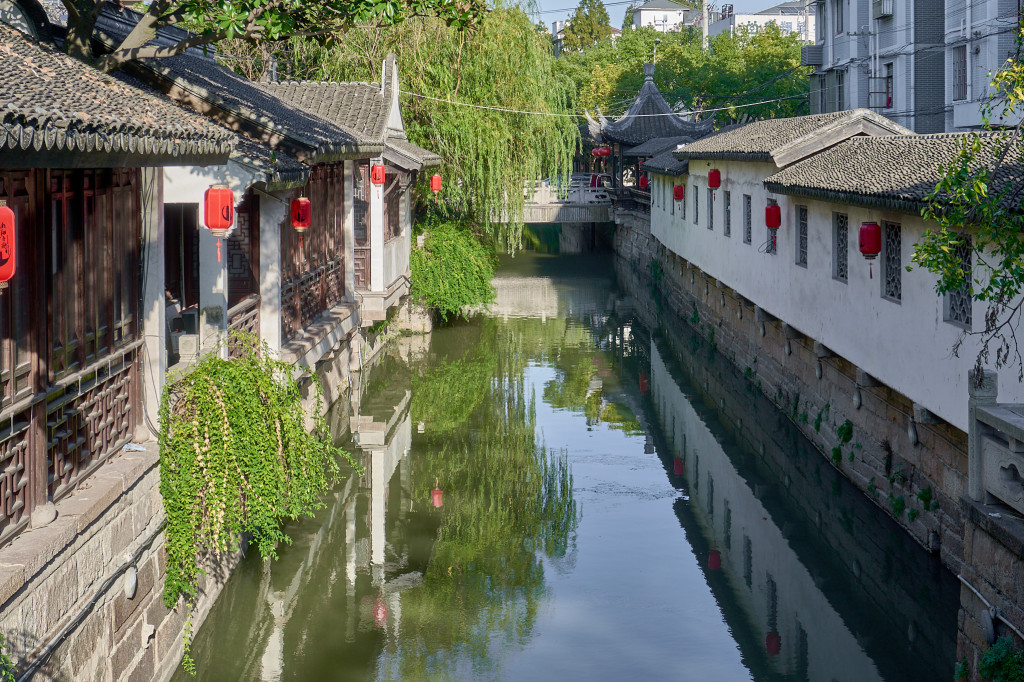
Yunxiang Temple
Continuing our journey, Yunxiang Temple awaits, with a history dating back to 505 AD during the Liang Dynasty. This temple splendidly replicates Tang Dynasty architecture, a rarity in southern China. Spanning 15 acres, it features three meticulously arranged courtyards along the central axis. There, you’ll discover symmetrical pavilions, grand bell and drum towers, halls devoted to bodhisattvas, a welcoming guest hall, and tranquil monks’ quarters, all linked by a covered corridor.
Guyi Garden
Our final destination is GuYi Garden, nestled in the northwestern outskirts of the ancient town. This garden proudly holds its place as one of Shanghai’s oldest classical gardens.
Nanxiang Xiaolong Steamed Buns
If hunger strikes, don’t miss the chance to savor Nanxiang Xiaolong Steamed Buns, deeply rooted in the culinary heritage of Nanxiang. But, if you happen to be in the heart of Shanghai’s bustling center, you don’t need to take a journey to Nanxiang Ancient Town to enjoy these delectable buns. Conveniently located near Yu Garden, Nanxiang Steamed Bun Restaurant (南翔馒头店) offers the perfect opportunity to relish these culinary delights.
Zhujiajiao Ancient Town, Qingpu
Zhujiajiao Ancient Town boasts a distinctive cultural heritage. It has a history spanning a thousand years that witnessed not only economic growth but also flourishing developments in culture, religion, and education. The town’s religious diversity is evident in the establishment of Buddhism during the Southern Song Dynasty, with nearly 20 temples built during the Ming and Qing Dynasties. Additionally, various other religions, including Taoism, have erected places of worship within Zhujiajiao Town.
36 Stone Bridges
Now, let’s delve into the iconic 36 stone bridges that epitomize Zhujiajiao’s ancient charm. Upon entering the town, you’ll immediately notice that its streets primarily consist of waterways, creating a maze-like network. The town’s character is defined by its pink walls, black tiles, winding alleys, and intersecting waterways. These 36 well-preserved stone bridges adorn the town’s nine main streets. Among them, the most notable is the Fangsheng Bridge (放生桥), the tallest and longest five-arch bridge in Shanghai. Every year, on July 27th, monks from the Cimen Temple come here to release captive animals, leading to a fishing ban near the Fangsheng Bridge. It’s truly an iconic structure in this ancient town.
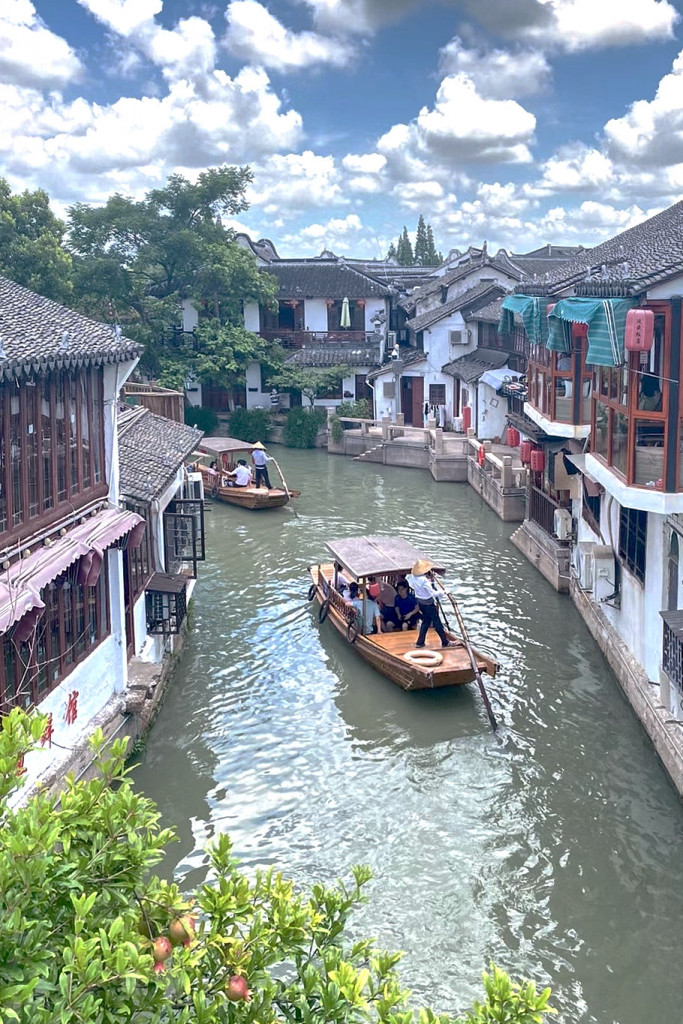
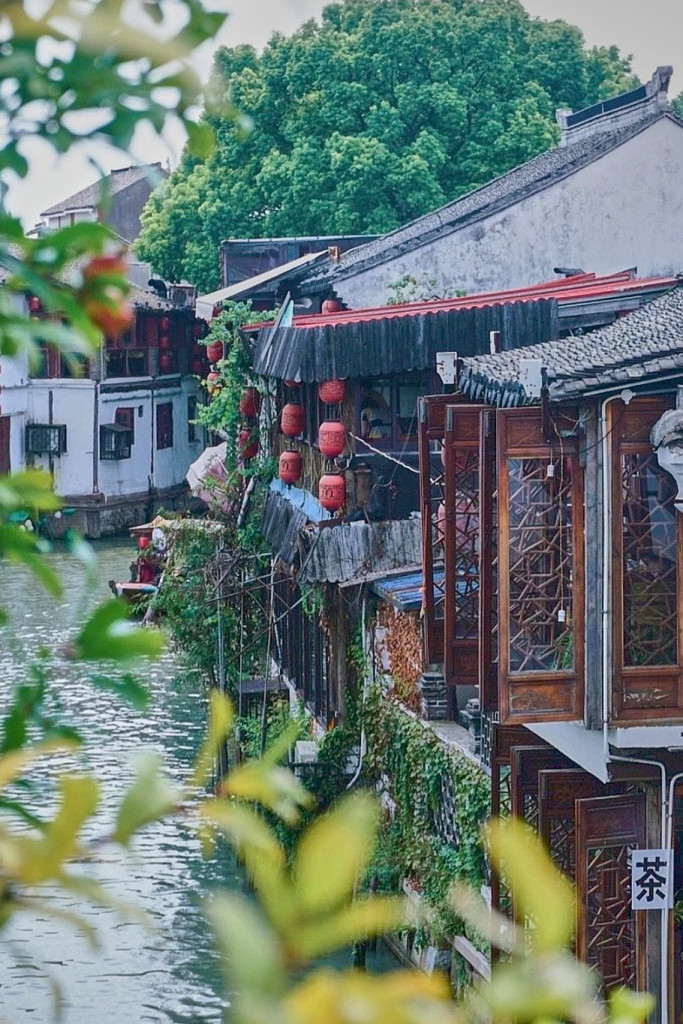
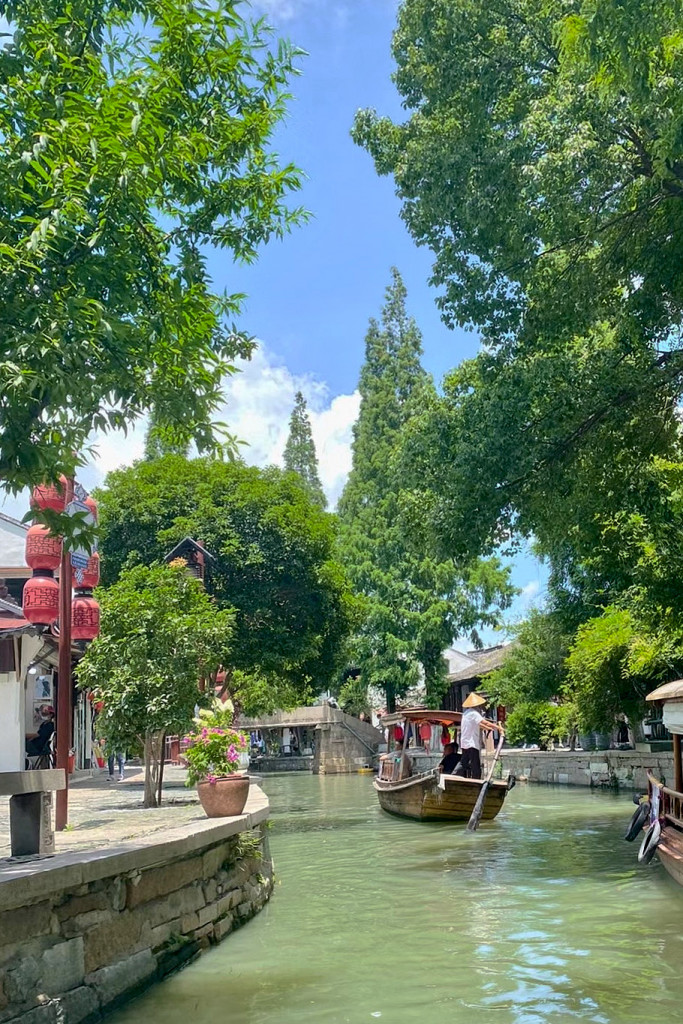
Local specialties
In Zhujiajiao Ancient Town, you’ll encounter a delightful array of seafood, including river shrimp, crabs, rolled pork (扎肉), meat-filled dumplings, braised trotters (红烧蹄膀), and “阿婆粽” (Apo Zongzi). These diverse snacks are a must-try for visitors, offering fresh, budget-friendly flavors that are sure to delight.
Exploring More
As you ascend the Fangsheng Bridge, you’ll immerse yourself in the rich historical ambiance of the town. Beyond the Fangsheng Bridge, Beida Street awaits, radiating a lively atmosphere with its restaurants, boutique shops selling clothes and accessories, and stores imbued with delightful historical charm. Further along this street, you’ll discover historical treasures such as the Qing Dynasty Post Office and the Kezhi Garden.
Liantang Ancient Town, Qingpu
Liantang Ancient Town is steeped in a rich historical and cultural legacy while offering natural beauty with its picturesque scenes of small bridges and flowing waters. What sets Liantang apart, and what I personally appreciate, is its quieter atmosphere and the fact that it’s less commercialized and touristy compared to some other ancient towns in the region.
Two Main Streets, Bridges, and Houses
Within the same Qingpu District, Liantang Ancient Town differs from the hustle and bustle of Zhujiajiao Town. Following extensive renovation, more than 2,600 meters of stone revetments, 69 various water bridges, riverbank platforms, and buildings from the Ming and Qing Dynasties have been carefully restored.
At the heart of the town, two stone-paved roads face each other across the river. One, known as Shangtang Street, predominantly features two-story buildings with street-facing storefronts. In contrast, Xiatang Street consists mainly of residential courtyards.
Hometown of an Influential Leader
Liantang is the birthplace of Chen Yun (陈云), located at No. 95 Xiatang Street. Chen Yun was a prominent Chinese revolutionary leader, a pivotal figure during the 1980s and 1990s, and played a crucial role in the Reform policies. Those interested in delving deeper into his life can explore “Chen Yün’s Strategy for China’s Development: A Non-Maoist Alternative” by Professor Nicholas R. Lardy from Yale University.
Three Cultural Heritages
The first one is Liantang Rice Field Song that passed down in the Qingpu region. Farmers sing these songs during rice transplanting and plowing to express gratitude to nature, alleviate their fatigue, and increase work efficiency.
Next is Traditional Indigo-Dyeing and Weaving Craft, a technique used to produce Tu Bu (土布), a handcrafted cotton textile prevalent in the suburban areas of Shanghai.
The last one is Basketry Craft with Water Bamboo Leaves which evolved from ancient weaving techniques using grass and willow. It combines local weaving traditions with the cultivation of Water Bamboo, a crop that thrives in the region.

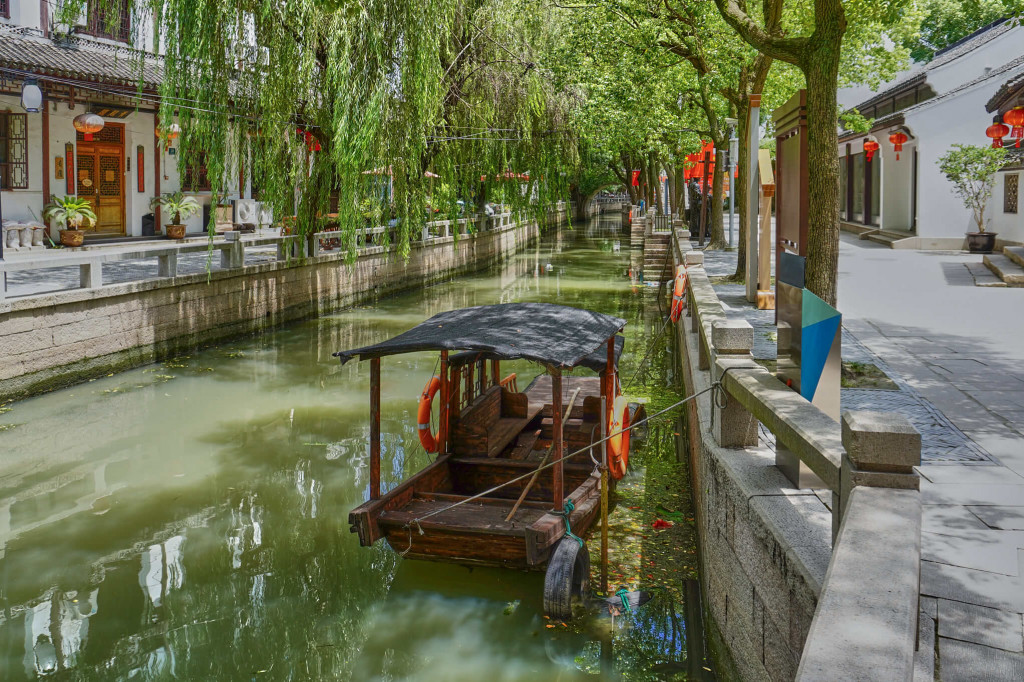
Xinchang Ancient Town, Pudong New District
Xinchang Ancient Town owes its origin and prosperity to the salt industry, which has deeply enriched its historical and cultural heritage. During the Southern Song Dynasty, the salt fields of lower Xiasha were relocated southward, resulting in the establishment of a new salt field called “Xinchang.”
What fascinates me most is how a small change in salt production could change a place so profoundly. It’s like going back in time, seeing how a thriving industry shaped Xinchang. This mix of history, culture, and industry has really caught my attention, making Xinchang a place I must visit.
Key Attractions for Tourists
With a history spanning over 1,100 years, Xinchang Ancient Town boasts iconic landmarks like monumental archways, saddle-shaped water bridges, and stone revetments. Besides, the town preserves approximately 150,000 square meters of historical buildings. Among these, nearly 20 grand residences, constructed by prominent families, still elegantly grace the town.
Scenic delights
Strolling along the cobblestone streets of the old town, passing through intricately carved stone arch bridges, and walking beneath mottled stone archways while observing small boats glide gracefully through the waterways all evoke the charming atmosphere of a water town. As you wander, you’ll come across shops adorned with vibrant red lanterns and flags gently dancing in the breeze. A local teahouse beckons, inviting you to savor tea and embrace the authentic lifestyle.
Local Culinary Specialties
Yet, your exploration of Xinchang Ancient Town remains incomplete without indulging in its local cuisine, featuring dishes such as “Kou Sanhuang Ji” (shredded three-yellow chicken), “Kou Danjuan” (shredded egg roll), and “Roupi Tang” (meat skin soup).
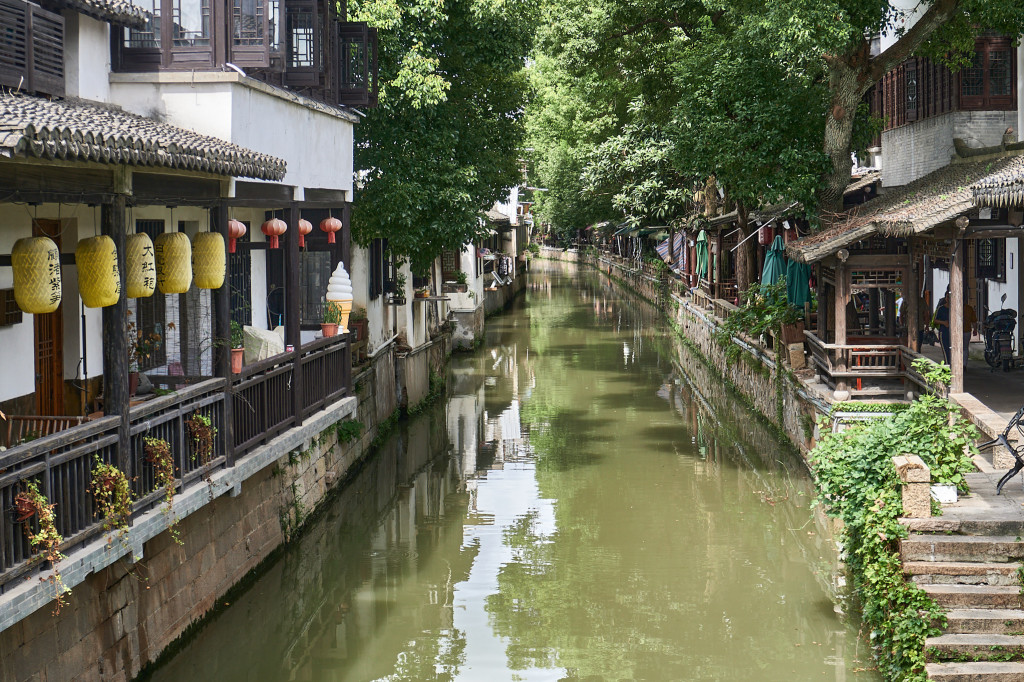
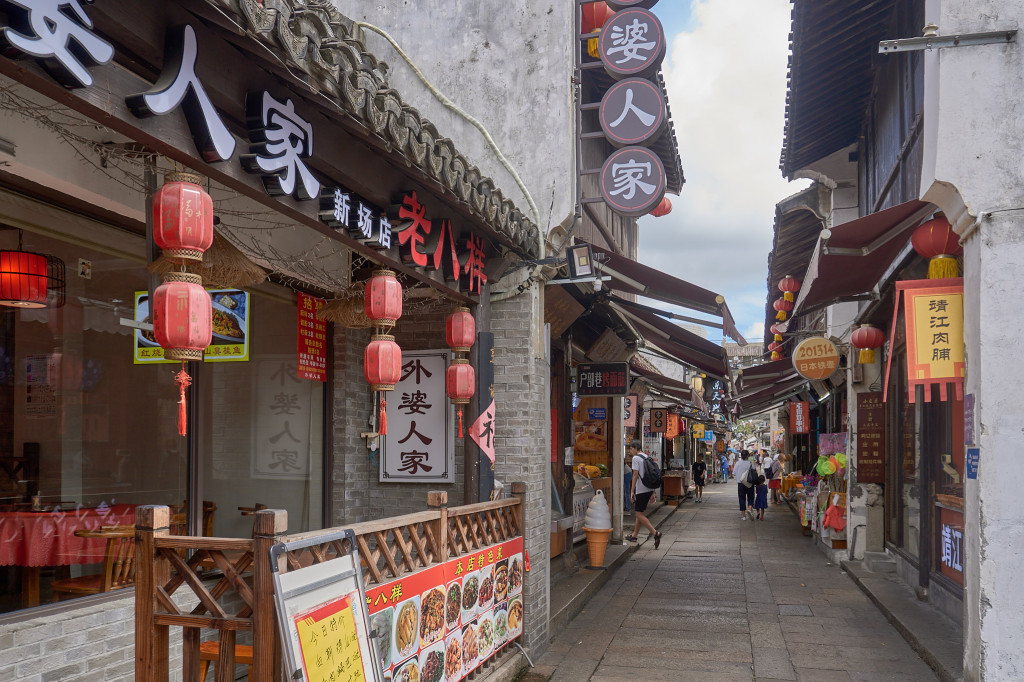
Qibao Ancient Town, Minhang
Located within the vibrant residential area of Minghang, Qibao Ancient Water Town (七宝古镇) holds a remarkable history, stretching back to the Northern Song Dynasty (960-1127) and experiencing a heyday during the Ming Dynasty (1368-1644). It stands as one of Shanghai’s most frequently visited ancient water towns.
Qibao (七宝) or “Seven Treasures”
The name ‘Qibao’ translates to ‘seven treasures’ in Chinese, and its origins spark local intrigue. One widely accepted theory links it to the illustrious Qibao Temple, a cornerstone of the town’s prosperity and cultural enrichment. Another tale weaves around ‘seven treasures,’ although only four are substantiated, and a mere two endure.
The famous food street: Qibao Old Street (七宝老街)
My personal connection with this charming place is deeply rooted in my childhood memories. As a child, I loved the local snacks and especial pickled vegetables here. Whenever I visited my parents’ home in Shanghai, I would head to Qibao to relish these nostalgic tastes and relive my childhood. The aroma of street food and lively atmosphere of Qibao Old Street always invoke warm memories.
Notably, Qibao Old Street is one of Shanghai’s renowned food destinations, offering classics like Fried Stinky Tofu (油炸臭豆腐, You Zha Chou Dou Fu), tender Slices of Lamb Meat (白切羊肉, Bai Qie Yang Rou), flavorful Braised Pork (酱猪蹄, Jiang Zhu Ti), and the intriguing Beggar’s Chicken (叫化鸡, Jiao Hua Ji). These eateries are typically quaint and inviting, with open kitchens where you can watch skilled chefs craft these delights before your eyes.
Other tourist sites
Qibao Ancient Water Town offers main attractions including the prominent Qibao Temple at its entrance and three picturesque stone bridges. Other cultural sites are the Shadow Puppet Art Museum, Zhang Chongren Memorial Hall, Cricket Cottage, Zhou’s Microcarving Museum, Qibao Winery, Bell Tower, Qibao Taoist Temple, and lifelike wax figures of historical personalities.
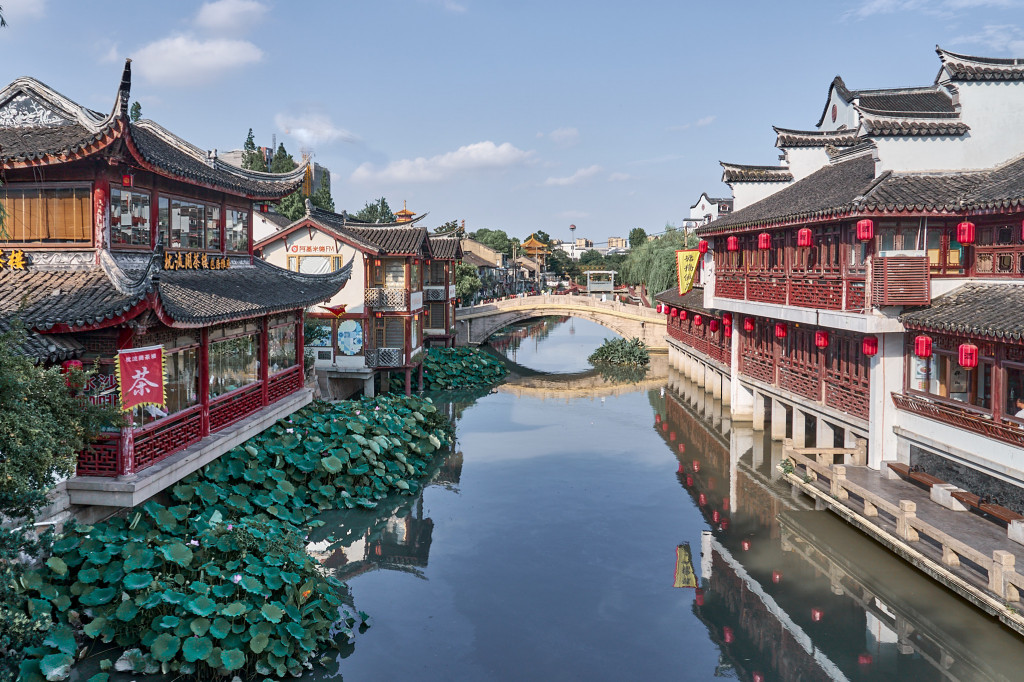
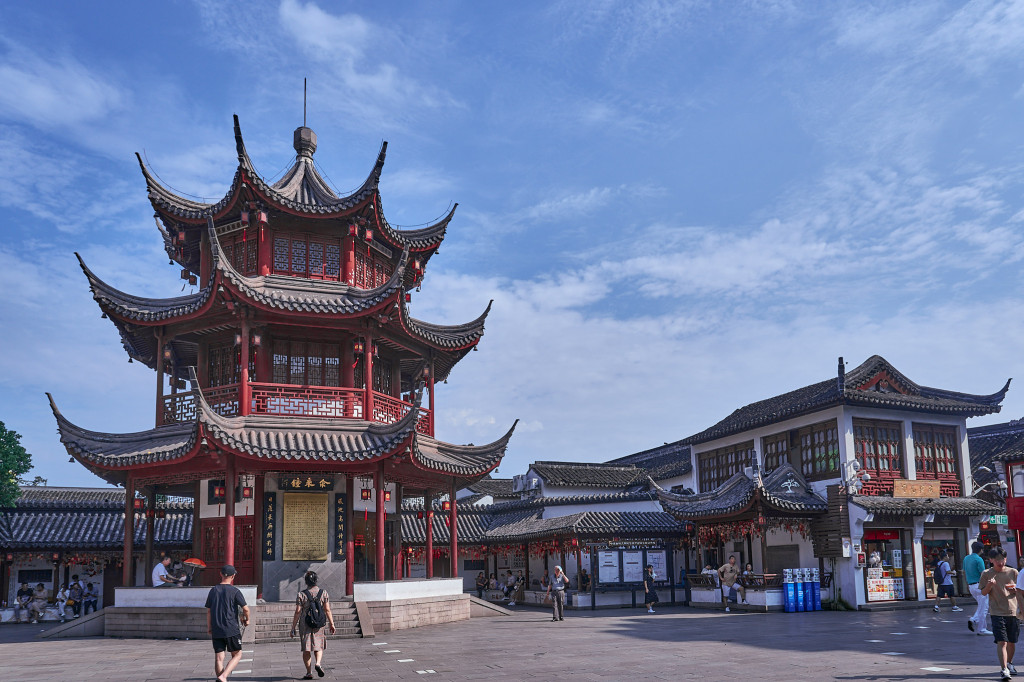
Summary of Shanghai’s ancient water towns
Shanghai’s ancient water towns, offer a glimpse into traditional Chinese life amidst modern skyscrapers. Each has its uniqueness. Nanxiang has its historic charm, pagodas, Yunxiang Temple, and GUYi Garden. Zhujiajiao boasts religious diversity and 36 stone bridges, while Liantang showcases historical homes and cultural heritages. Xinchang’s salt industry history fascinates me, with iconic landmarks and local cuisine. Lastly, Qibao holds childhood memories of delectable local snacks and a vibrant food street. I plan to visit these charming towns from time to time, for a day trip or a weekend escape, as they provide a soothing cultural retreat.
How to get to the Shanghai’s Ancient Water Towns
Nanxiang Ancient Town, Jiading (南翔古镇)
By Metro
- Take Line 11 of the Shanghai Metro.
- Then Get off at Nanxiang Station (南翔站), which is the closest station to Nanxiang Ancient Town.
- Finally exit the station and follow the signs or ask locals for directions to the ancient town, which is within walking distance from the metro station.
Zhujiajiao Ancient Town, Qingpu (朱家角古镇)
Take Shanghai Metro Line 17 and exit at Zhujiajiao Station. It will be about a 15 minute walk north from there.
Liantang Ancient Town, Qingpu (练塘古镇)
To get to Liantang Ancient Town from Hongqiao Train Station, follow these steps:
- Board Metro Line 17 at Hongqiao Train Station.
- Get off at Zhujiaojiao Metro Station.
- Exit through Gate No.2.
- Walk approximately 330 meters to the Qingfeng Line Bus Stop (青枫专线 / 青小线).
- Take the Qingfeng Line bus.
- Get off at the Liantang Bus Stop (练塘汽车站).
- Continue on foot for an additional 670 meters to reach the ancient town.
Xinchang Ancient Town, Pudong New District (新场古镇)
To reach Xinchang Ancient Town, follow these steps:
- Take Metro Line 16 towards Di Shui Lake (滴水湖).
- Get off Xinchang Metro Station and use the exit No.1.
- Walk about 80 meters to the Bus Stop for Bus No. 1068.
- Get off at Xin Feng Gong Lu Pai Lou Xi Lu Bus Station (新奉公路牌楼西路).
- Walk about 400-meter to the entrance of Xinchang Ancient Town.
Qibao Ancient Town, Minhang (七宝古镇)
To get to Qibao Ancient Water Town, simply hop on Shanghai Metro Line 9 and ride to Qibao (七宝) station, which is conveniently situated within a modern shopping mall. Once you exit the mall using exit 2, head south along Minzhu Road (民主路). When you reach the T-junction, take a left turn and proceed east along Qingnian Road (青年路). You’ll soon spot the entrance, identified by an archway with the bell tower in the background.
